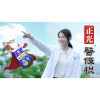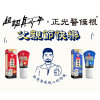The Secret of Bone Healing Sambucus Javanica
In traditional medicine medicine, Sambucus, also known as Bone-Healing or Shuo Die, is renowned for its ability to dispel wind, eliminate dampness, promote blood circulation, and stop bleeding. Its dried leaves and roots are commonly used in traditional Chinese herbal medicine to treat bruises and injuries. Sambucus is an endemic species found in Taiwan, distributed up to an altitude of about 2500 meters. It prefers to grow in sunny locations and its nectar glands on the flowers are irresistible to various insects, especially butterflies. During the flowering season, one can often find ants and all kinds of butterflies feasting on the flowers, while predators like spiders and cockroaches lurk nearby, trying to fill their stomachs. The entire plant forms a miniature ecosystem. Therefore, Sambucus can be considered one of the most important nectar sources among native plants in Taiwan.
Origin:
[Botanical Name]: Sambucus javanica Blume
[English Name]: Sambucus javanica
[Family]: Caprifoliaceae
[Other Names]: Taiwanese Hugu, Jie Gu Cao, Seven-Leaf Lotus.
Distribution and Morphology:
[Distribution]: Found in China (Anhui, Fujian, Gansu, Guangdong, Guangxi, Guizhou, Hainan, Henan, Hunan, Hubei, Jiangsu, Jiangxi, Shaanxi, Sichuan, Tibet, Yunnan, Zhejiang), India, Indonesia, Japan, Laos, Malaysia, Myanmar, the Philippines, Thailand, Vietnam, and Taiwan.
[Morphology]: Dioecious, perennial herbaceous shrub, reaching a height of 1.5 to 5 meters. It has horizontal rhizomes that often sprout new shoots. The upper part of the stem is branched. The leaves are opposite and odd-pinnate compound, measuring 15 to 50 cm in length, with 2 to 7 pairs of leaflets. The upper stem bears trifoliate compound leaves, with ovate-lanceolate or elongated-lanceolate leaflets, measuring 5 to 20 cm in length and 1.5 to 6 cm in width, with pointed or gradually pointed tips and a blunt to gradually narrow base, with serrated edges; they have long petioles. The inflorescence is a panicle, terminal, and multi-flowered. The pedicels of the flowers are slender, measuring 3 to 4 mm, often with yellow cup-shaped glands. The flowers are unisexual; the male flowers have a slightly 5-lobed calyx and a white to cream-colored corolla, measuring 1.5 to 2.5 mm in diameter, with ovate lobes; there are 5 stamens, each equal in length to the corolla lobes. The female flowers lack stamens; the style is 3-lobed; the flower pedicels have red-yellow cup-shaped nectar glands. The fruit is spherical and turns red when ripe. The seeds are fan-shaped or ovate. The flowering season is from spring to autumn.
Functions and Indications:
The whole plant possesses detoxifying, anti-inflammatory, diuretic, antipyretic, and analgesic effects, making it an essential remedy for detoxifying and reducing swelling.
[Source]: Illustrated Handbook of Commonly Used Medicinal Plants in Taiwan, Volume III.








